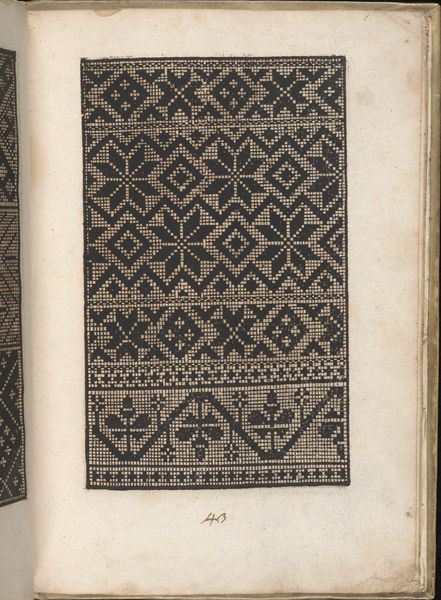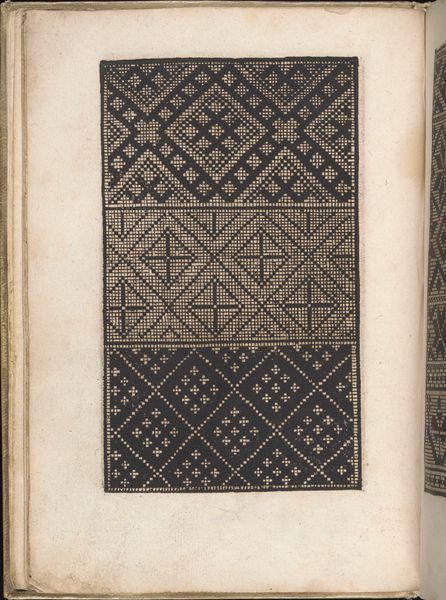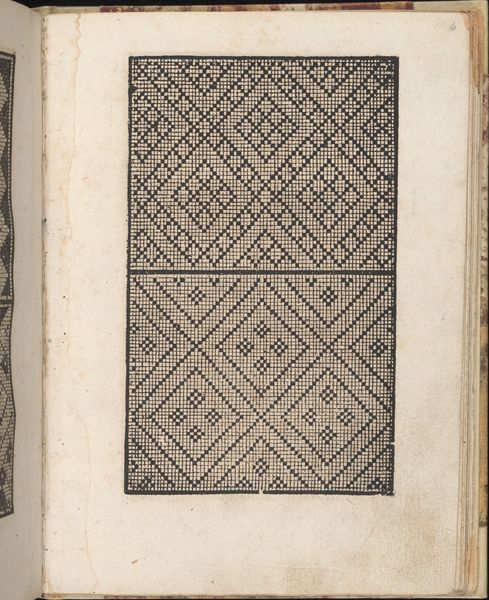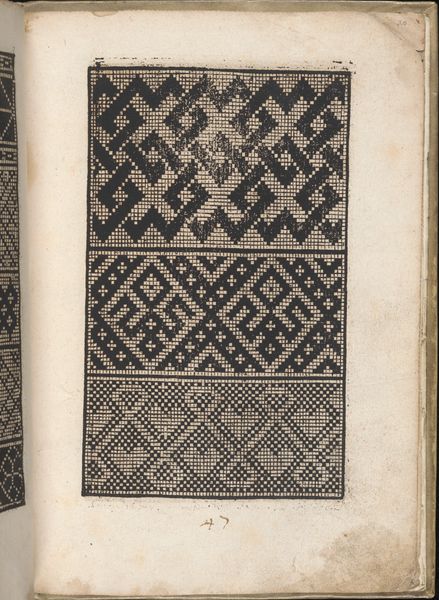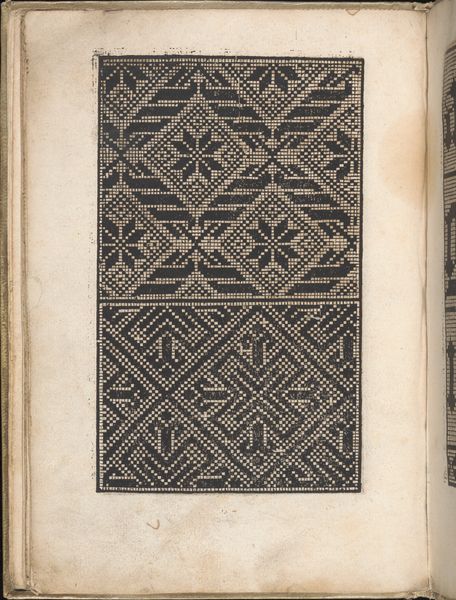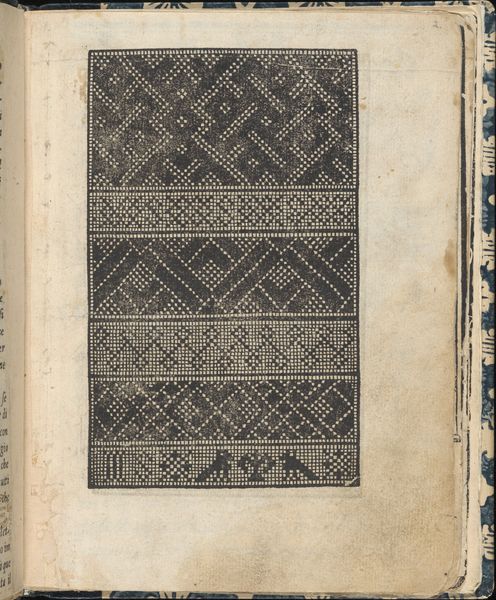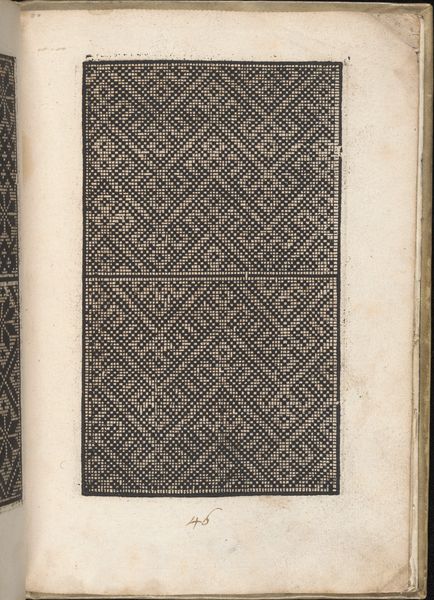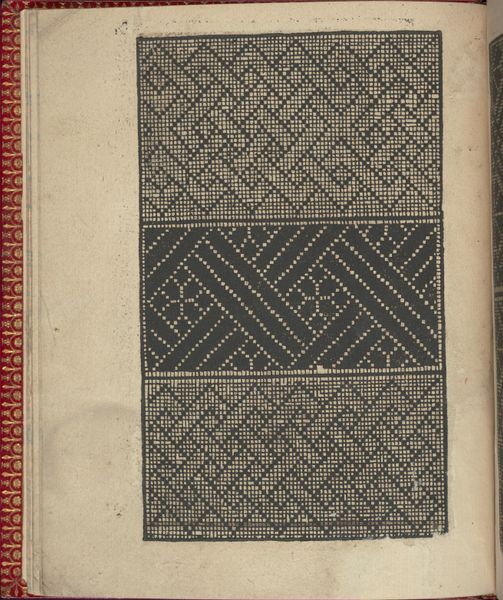
drawing, print, paper, woodcut, engraving
#
drawing
# print
#
paper
#
11_renaissance
#
geometric
#
woodcut
#
engraving
Dimensions: Overall: 7 7/8 x 5 1/2 in. (20 x 14 cm)
Copyright: Public Domain
Curator: Here we have a page from Peter Quentel's "Eyn new kunstlich boich," created in 1529. This particular page, 14v, features a series of geometric patterns rendered through woodcut and engraving on paper. Editor: It's visually arresting, isn't it? The stark contrast of the black ink against the aged paper creates a surprisingly dynamic effect. Almost textile-like. Curator: Precisely. Notice the deliberate repetition of forms. Quentel has compartmentalized the design into horizontal registers, each showcasing distinct but related motifs. The squares and diamonds generate a complex, self-referential system. Editor: These weren't mere aesthetic exercises. Lace-making was a deeply gendered practice, largely performed by women and these pattern books democratized design. This made these intricate and costly motifs accessible across socioeconomic lines, disrupting aristocratic monopolies on luxury textiles. Curator: An insightful reading. Furthermore, observe how Quentel uses the limitations of the woodcut medium itself to his advantage. The blocky, geometric quality is not merely incidental but contributes to the overall aesthetic. He understands that restriction can catalyze creativity. Editor: I agree that the patterns evoke larger socio-political trends. These patterns found their way onto clothing, home furnishings, and religious textiles. They subtly reshaped the visual culture of the time. In a way, Quentel's book wasn't just a guide—it was a tool for cultural disruption. Curator: Interesting! It highlights that we're discussing design meant for functional purpose beyond pictorial representation, thus influencing material culture and economy. And these aren't idle decorations—they participate in complex system of production. Editor: Right. The motifs are almost like secret messages, carrying meaning and embodying historical change. Viewing this work today allows a window into those stories. Curator: Yes, analyzing form and structure provides a more rigorous, albeit abstract understanding of aesthetic principles governing its creation and enduring legacy. Editor: It's a reminder that these historical objects pulse with life, with implications resonating to our modern context.
Comments
No comments
Be the first to comment and join the conversation on the ultimate creative platform.


